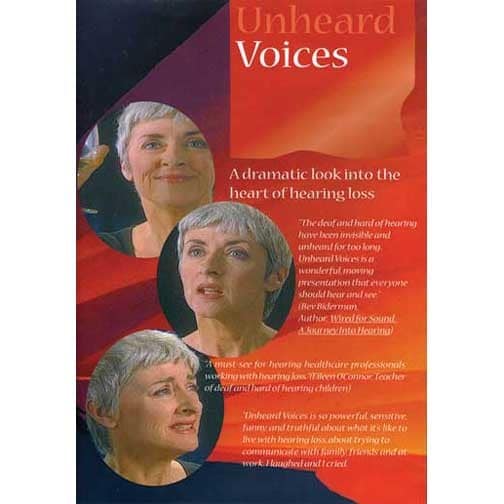This post is a follow up to a post from two weeks ago in which we discussed the typical symptoms and prevalence of vestibular schwannoma, sometimes known as an acoustic neuroma. In the previous post, we also discussed the typical hearing and vestibular test findings of patients with vestibular schwannoma, as well as a specific case.
Typically, those with a vestibular schwannoma have symptoms of a longstanding, gradual but progressive unilateral hearing loss. These patients may also report symptoms of gradually progressive imbalance, but do not typically report symptoms of vertigo or sudden onset hearing loss. These patients’ vestibular function tests are typically grossly abnormal when assessing the affected side independently and are mostly normal when assessing vestibular function as a whole.
More information on the typical presentation of a vestibular schwannoma can be found here.
Unusual Symptoms for Acoustic Neuroma
 This week’s post will focus on another patient we saw recently with a confirmed vestibular schwannoma, who did not have the typical symptoms, hearing test and vestibular test findings of a patient with a vestibular schwannoma.
This week’s post will focus on another patient we saw recently with a confirmed vestibular schwannoma, who did not have the typical symptoms, hearing test and vestibular test findings of a patient with a vestibular schwannoma.
The auditory complaints of this patient were that of a rather rapid, progressive unilateral hearing loss in the left ear across several years. This patient had previous hearing evaluations dating back to 2014, with the first hearing evaluation revealing a severe to profound high frequency sensorineural (inner ear/auditory nerve) hearing loss in the left ear, with normal hearing in the right ear.
A subsequent hearing evaluation in 2016 revealed a further 20 dB decrement in the middle frequencies; however, the word recognition ability in that ear was still found to be excellent with 96% of words correctly repeated in quiet. A hearing evaluation performed this year (2018) revealed a significant progression of the hearing loss in the left ear, which was found to affect the low and middle frequencies. This most recent hearing evaluation revealed a moderate sloping to profound sensorineural hearing loss with extremely poor word recognition ability (0%) in a quiet scenario.
This patient’s current dizziness complaints were that of visual instability with quick head movements, progressive imbalance and constant disequilibrium.
The patient was found to have a persistent, direction-fixed right beating spontaneous nystagmus (jerking eye movement only to the right) in darkness, which increased with right gaze and decreased with left gaze in darkness. This pattern of nystagmus is consistent with Alexander’s Law and suppressed with a visual fixation, which is consistent with an asymmetry in the peripheral vestibular input that the patient has not compensated for. More on vestibular compensation can be found here.
Oculomotor assessment was found to be normal for this patient, suggestive of normal cerebellar function (balance and coordination center of the brain). More on oculomotor assessment and the test battery that is typically utilized clinically can be found here.
Rotational chair testing revealed reduced gain (decreased vestibulocular reflex (VOR) response) across the majority of the frequencies assessed, with a significant asymmetry to the left noted at all frequencies. This pattern of findings is consistent with the spontaneous nystagmus mentioned above, as the right beating nystagmus will be measured stronger than the left beating nystagmus due to the spontaneous nystagmus at baseline. More on Rotational chair testing can be found here.
Lateral vHIT (video head impulse test) revealed reduced VOR gain (amount of VOR response) and frequent overt and covert saccades (poor VOR response with the oculomotor system attempting to compensate for visual instability, due to poor VOR function) for head impulses to the left. Head impulses to the right were found to have normal VOR gain, but did reveal frequent unorganized overt saccades as well. More on vHIT testing can be found here and here.
Bilateral bi-thermal (warm & cool) water caloric irrigations revealed a 75% reduced vestibular response in the left ear and the directional preponderance showed 53% stronger right beating nystagmus. These caloric irrigations revealed a significantly reduced vestibular response from the left ear. The significant directional preponderance is consistent with the previously observed spontaneous nystagmus, consistent with an uncompensated vestibular hypofunction. More on caloric irrigations can be found here and here.
Atypical Findings
This patient’s test findings were not typical of a patient with a vestibular schwannoma. Most individuals with a vestibular schwannoma gradually centrally compensate for the asymmetry in peripheral vestibular input over time due to the slow growing nature of these tumors, thus findings of spontaneous nystagmus and significant asymmetry on rotational chair are atypical. This patient’s hearing did seem to deteriorate rather rapidly in the left ear as well.
Vestibular schwannoma or acoustic neuroma does tend to present clinically with a typical pattern of symptoms and test findings, as do most pathologies. The purpose of showing you both a typical and atypical presentation with this pathology is to urge clinicians to be aware that disease processes do not always follow the “typical” pattern and we must be aware of this to best serve our patients.
*Photos Courtesy of Mayo Clinic, Wikimedia Commons






